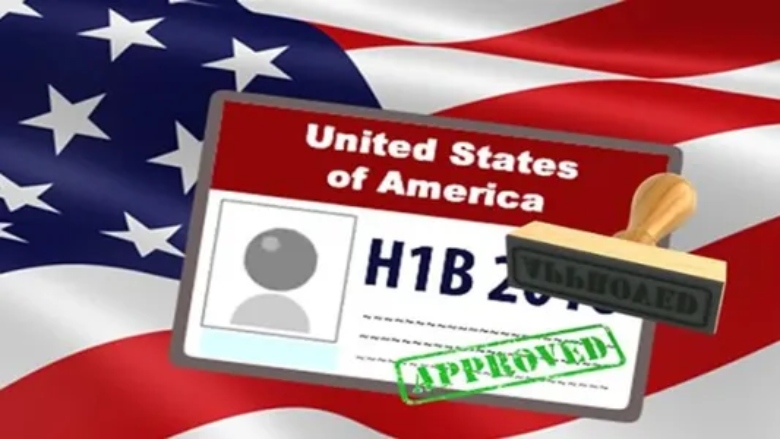The H1-B visa program has long been a point of contention in U.S. immigration policy, providing temporary work visas for foreign workers in specialized fields. However, new data from the United States Citizenship and Immigration Services (USCIS) reveals startling realities about the program’s scope, its impact on wages, and its role in chain migration—far beyond what statutory caps and oversight mechanisms were designed to allow.
Proponents of the H1-B program claim it adheres to a strict annual cap of 85,000 visas: 65,000 for workers selected through a lottery and an additional 20,000 for those holding advanced degrees. However, USCIS data for fiscal year 2023 paints a very different picture.
A staggering 386,318 H1-B visas were approved in FY 2023. Of these, over 100,000 were new visas issued, surpassing the statutory cap. This discrepancy stems from loopholes allowing unlimited visas for nonprofits, government contractors, and workers in areas deemed “critical to American interests.”
The numbers for FY 2023 represent a 13% decrease from FY 2022, when 442,043 H1-B visas were approved. Yet, even at this reduced level, the volume of visas granted far exceeds statutory limits, raising questions about oversight and accountability in the program.
Critics of the H1-B program have long argued that it suppresses wages and limits job opportunities for American workers. Data from FY 2023 lends credence to this claim.
- Employer Control: Only 75,843 H1-B visa holders filed a change of employer petition in FY 2023, meaning that over 80% of visa holders are effectively tied to their original employers. This lack of mobility limits workers’ ability to negotiate higher wages or better working conditions.
- Wage Discrepancies: The median income of an H1-B visa holder in FY 2023 was $118,000, significantly below the $189,000 average compensation for Big Tech workers in Silicon Valley in 2024. This disparity underscores concerns that H1-B workers are used as a source of cheaper labor, even in high-paying industries.
Another surprising revelation is the educational background of H1-B visa recipients:
- Over one-third of approved workers in FY 2023 held only a bachelor’s degree.
- Just 22% had a master’s degree, and only 8% held a PhD.
Despite concerns about the quality and necessity of these applications, USCIS approved an astonishing 99.9% of H1-B visa applications in FY 2023. Out of 386,559 new or continuing applications, 386,318 were approved. Such a near-perfect approval rate raises serious questions about the rigor of the vetting process, especially given documented cases of fraud and abuse within the program.
The impact of the H1-B program extends beyond the workers themselves. According to USCIS data, over 55,000 nonimmigrant visa holders applied for a change in status in FY 2023, primarily as spouses or children of H1-B workers.
In total, approximately 200,000 family members have joined H1-B workers in the U.S., further amplifying the program’s impact. While the H1-B visa is not officially a dual-track program leading to permanent residency, many recipients eventually transition to green card status, creating a de facto pathway to citizenship.
This evolution of the H1-B program into a pipeline for mass immigration was never its original intent and reflects broader concerns about the manipulation and abuse of U.S. visa programs.
The H1-B visa program was designed to fill gaps in the U.S. labor market with highly skilled foreign workers. However, the data reveals a system that has grown far beyond its intended purpose, with significant implications for American workers, wages, and immigration policy.
Critics argue for stricter oversight and enforcement of statutory caps to ensure the program serves its original goals. Proposed reforms include:
- Introducing higher wage thresholds to prevent undercutting of American workers.
- Implementing stricter vetting processes to reduce fraud and abuse.
- Limiting the use of unlimited H1-B visas by nonprofits and contractors.
Supporters of the program, meanwhile, argue that it is essential for maintaining America’s competitive edge in global industries, particularly technology and engineering.
As debates over immigration and labor policies continue, the H1-B visa program remains a focal point. Balancing the needs of the U.S. labor market with fair treatment of foreign workers and the protection of American jobs will require careful consideration and robust reform.
With nearly 400,000 visas approved annually and chain migration adding to the program’s impact, the stakes for getting it right have never been higher.




2 Comments
Can’t wait till this asshole son of a bitch drops dead the sooner the better. Him and and corrupt Biden must drink the same water on how to destroy America.
They should’ve pulled his visa years ago and kicked his nazi ass out of our country
Is everyone working in the H1-B visa program a foreigner or DemoRat???? They’re definitely traitors! What’s so hard about throwing applications away or just saying NO!